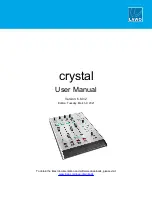
NEAX2400 IPX Feature Programming Manual
Page 428
NDA-24297, Issue 1
L-5
Least Cost Routing - 3/6-Digit
Programming
STEP 1:
ASYD
- System Data 1, Index 6, Bit 0. Should special Sender Tone be sent to station when connected
to a sender? 0/1: No/Yes. (Optional)
System Data 1, Index 6, Bit 2. Should special Sender Tone be sent to the Attendant Console when
connected to a sender? 0/1: No/Yes. (Optional)
System Data 1, Index 65. Assign the number of routes in the system.
System Data 2, Index 2, Bit 0. What is the sender type for an OG trunk connection to a station? 0/1:
Dial Pulse/Push Button. This data is valid only when CDN 2:ONSG of Route data is assigned as data
“3”, PB/DP. 0
System Data 2, Index 2, Bit 1. What is the sender type for an OG trunk to the Attendant Console? 0/1:
Dial Pulse/ Push-button. This data is valid only when CDN 2:ONSG of Route data is assigned as data
“3”, PB/DP.
STEP 2:
ARTD
- Assign the LCR(S) route as shown below. For uniformity, always use Route 31 as the LCR(S)
Flag route. In CDN 13:AC, include the LCR(S) access code in LCR(S) development.
Assign the LCR(S) Flag route as shown below:
RT: 31
6-TCL
:1
7-L/T
:1
8-RLP
:2
9-TQ
:1
13-AC
:1
STEP 3:
ATRK
- Assign Originating Register Trunks (ORT) to the system in a quantity calculated from
expected traffic. Registers are located on levels 0-3 of any 8RST circuit card.
Senders must be assigned to the system in a quantity calculated from expected traffic. Senders are
located on levels 4-7 of any 8RST circuit card.
RT:
Route Number
Trunk Route Number
Intra-office Route Number (901-931)
901-ATT
913-TCFT for ATT
902-ORT
915-Night ATT
903-IRT
916-MFCR
905-Sender 917-MFCS
909-DCFT 919 to 926-Modem
TK:
Trunk Number
TN:
Tenant Number
RSC:
Route Restriction Class
SFC:
Service Feature Class
For the outgoing trunks used in LCR(S), refer to those specific route access features.
STEP 4:
MBTK
- Assign the Make Idle status to all register sender trunks.
STEP 5:
ANPD
- Reserve a level, usually “9”, for LCR or LCR (S) access. Assign Connection Indexes, CI = N,
H; Normal (N) and Hooking (H). Number of Necessary Digits is 1. Busy Lamp Field is not activated.
STEP 6:
ASPA
- Assign the LCR (S) access code, Type of Service, SRV = LCR (Least Cost Route Selection)
or SRV = LCR (S) (Register Sender LCR). Assign route number 31 associated with this access code.
Assign Connection Indexes, CI = N, H; Normal (N) and Hooking (H). Assign data “1” for second dial
tone, parameter (2nd dial tone). Assign data “1” to AH parameter if Procedure II is used for
AUTHORIZATION CODE [A-20].
STEP 7:
ARNP
- Assign the physical route numbers as assigned in ARTD and relate these routes to the LCR
(S) access code as assigned in ASPA for SRV = LCR (Least Cost Route Selection) / LCR (S) (Register
Sender LCR). The LCR (S) access code is usually “9”. The routes to be assigned will be those routes
listed in the various OPRs of the AOPR command.
Содержание NEAX2400 ICS
Страница 1: ...OCTOBER 2000 NEC America Inc NDA 24297 ISSUE 1 STOCK 200775 Feature Programming Manual ...
Страница 43: ...NEAX2400 IPX Feature Programming Manual Page xxvi NDA 24297 Issue 1 This page is for your notes ...
Страница 690: ...NEAX2400 IPX Feature Programming Manual NDA 24297 Issue 1 Page 647 Splitting S 4 Programming No programming is required ...
Страница 1089: ...NEAX2400 IPX Feature Programming Manual Page 1046 NDA 24297 Issue 1 This page is for your notes ...
















































